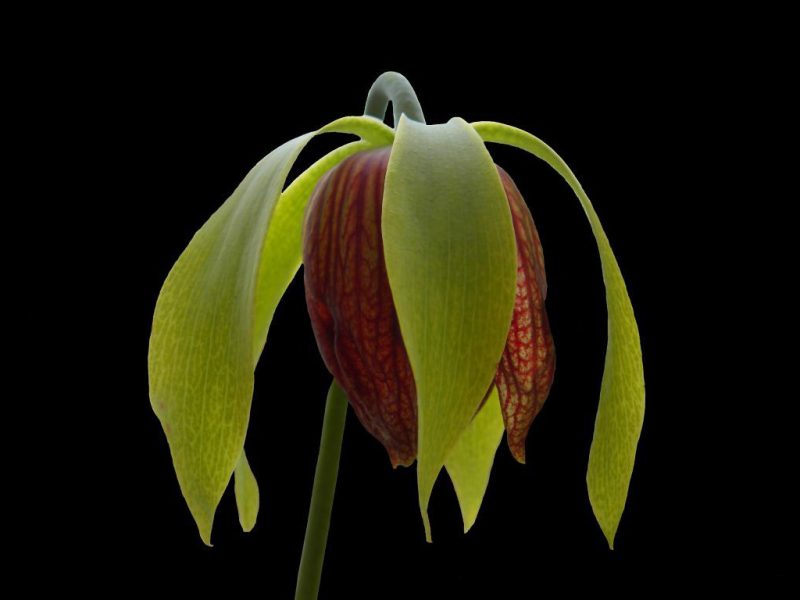Carnivorous Lily
Carnivorous lilies supplement their nutrient intake by capturing and eating wildlife, grappling and constricting passing creatures with its vines before inserting them into its pitcher for digestion. These vines are splayed around the central pitcher like a series of tripwire and react quickly if disturbed. They are hearty plants, capable of completely regrowing from its root system alone once established.
Basic Information
Anatomy
Each plant contains a large pitcher for digesting its prey, the opening pointing downwards to allow for easier insertion. During the spring this pitcher is surrounded by flower stalks, displaying a large downtured red flower which is frequently a beautiful bioluminescent red to lure in wildlife at night. Each plant also possesses a large array of vines splayed around itself as a tripwire network. When a vine is disturbed that vine and its neighbors quickly wrap around the potential prey, grappling and strangling it.
Ecology and Habitats
Carnivorous lilies can be found in forests or bogs, and are particularly common in areas with low soil fertility due to the lack of competition from plants without supplemental food sources.
Dietary Needs and Habits
The Carnivorous Lily supplements its nutritional requirements by digesting local wildlife. The bloodthirsty plant grapples creatures that wander too close to its vines, squeezing them lifeless before devouring them within its pitcher.
Additional Information
Uses, Products & Exploitation
While there are tales of individuals seeking to utilize carnivorous lilies as both defense and natural lighting around their homes, in most cases these experiments do not end well. The flowers are popular for use as bioluminescent dye due to their beautiful nighttime reds, and there are some medical studies seeking to use these same traits to check for internal bleeding by injecting the bioluminescence into the bloodstream and seeking for unusual bright patches within the patient.
Perception and Sensory Capabilities
The lily uses its vines as trip wires, reflexively wrapping tightly around its prey if disturbed.
Scientific Name
Carnivaria lilliana
Lifespan
12 years
Conservation Status
Least Concern
Average Height
6 to 8 feet (pitcher)
5 to 6 feet (flower stalks)
Average Length
The surrounding vines can extend up to 15 ft in length. The resultant vine mass can extend up to 10 ft in diameter from the pitcher, growing more dense towards the base.






Comments